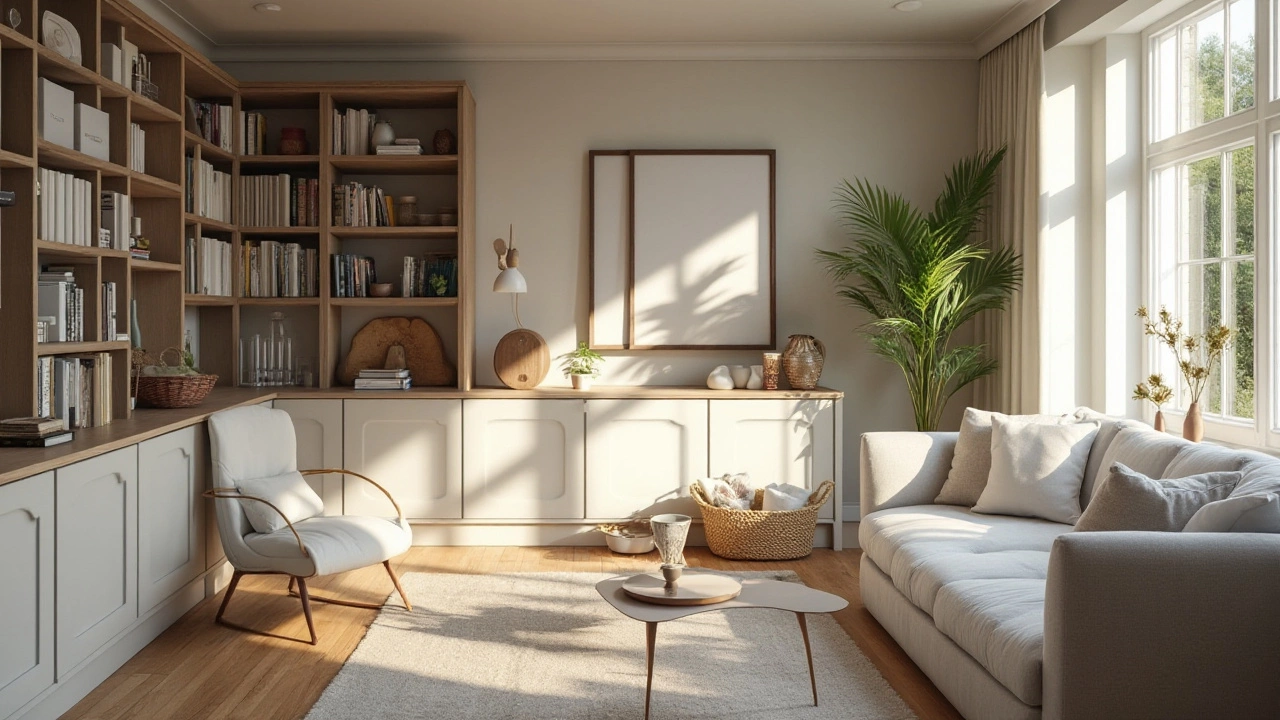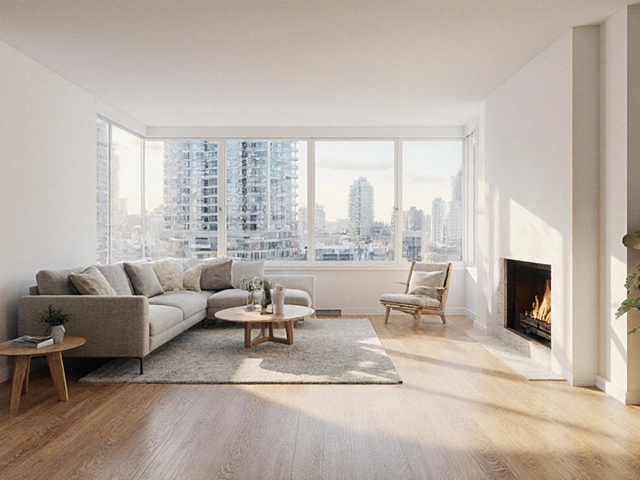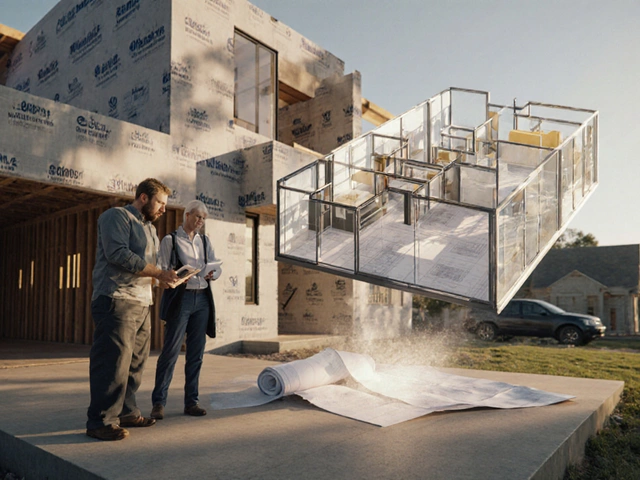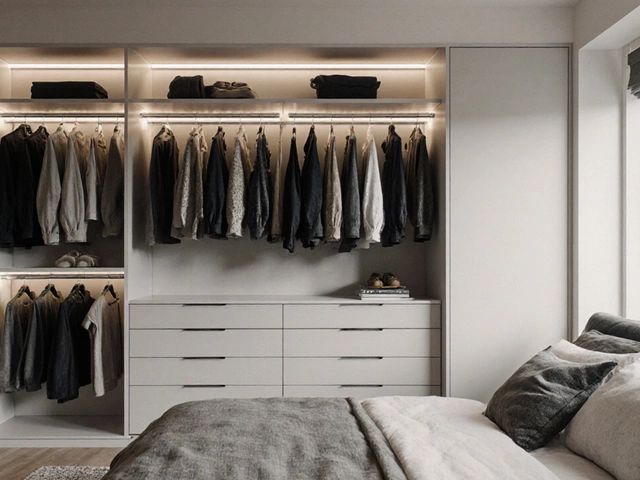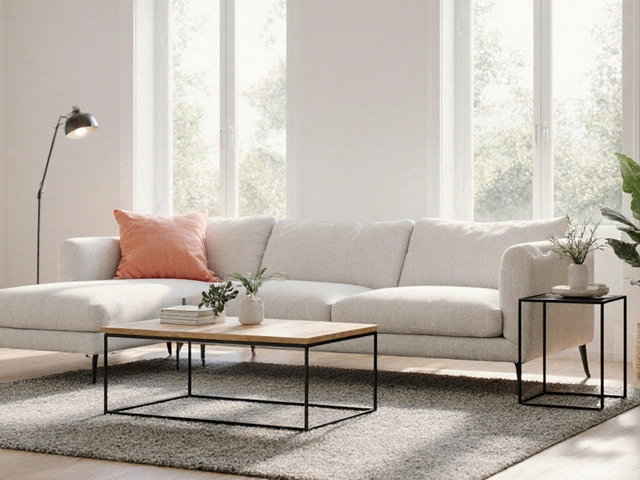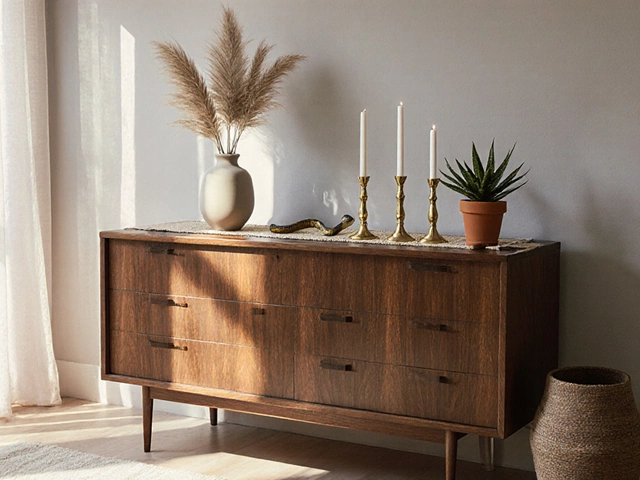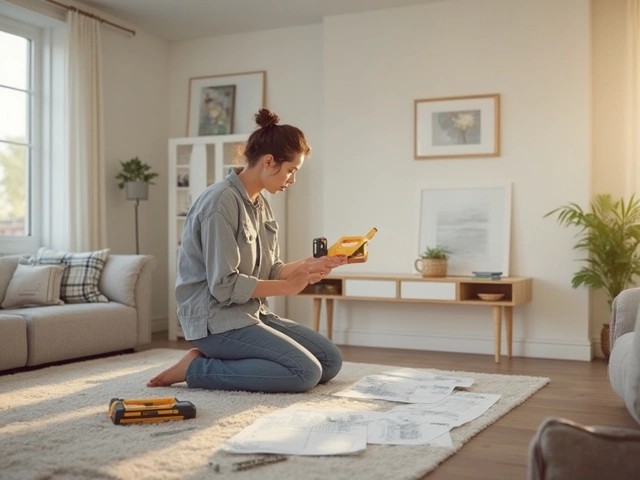Decluttering your home might seem like a daunting task, but with a few straightforward strategies, it can become a rewarding journey. Our living spaces often reflect the whirlwind of our lives—sometimes full of unnecessary items that take up precious space and mental clarity. By tackling the clutter, you open up room for peace and positivity.
The key is to break the process into manageable steps. Understanding what makes your home cluttered is the first of these, followed by systematically organizing and discarding what you don't need. With the right storage solutions, you can maintain order and enjoy a more serene environment.
Embark on this transformative adventure by discovering a method that suits your lifestyle. Whether it’s digital calendars, labeled containers, or simply a disciplined schedule for tidying up, you’ll find that decluttering isn’t just about the home—it’s also about a mental refresh.
- Understanding Clutter
- Steps to Declutter
- Effective Storage Solutions
- Maintaining a Clutter-Free Home
Understanding Clutter
Clutter is more than just a mess of items scattered across your living room floor; it's a vast concept that intertwines with our daily habits, our memories, and sometimes, our emotional well-being. At its core, clutter is anything that we do not regularly use or love. It includes those items that are tucked away, gathering dust, and yet occupy mental space. Scientific studies have shown that physical clutter, whether in our homes or workspaces, contributes to stress and anxiety. This is not surprising as a study by the Princeton University Neuroscience Institute found that clutter competes for our attention, leading to decreased performance and increased stress. In other words, a cluttered environment can result in a cluttered mind.
Understanding why we accumulate clutter is the first step in tackling it. Often, we hold onto possessions out of a sense of obligation or nostalgia. Many items may remind us of a loved one or a past experience we cherish. In some cases, objects may symbolize unfulfilled aspirations or future plans. There's also the undeniable allure of good deals, leading us to purchase things that later become clutter. It’s important to recognize these patterns and think critically about what we truly need to keep. This mindset shift is crucial in our journey toward achieving a more organized and tidy home.
Another aspect of clutter involves the phenomenon of 'just-in-case' keeping, where people hold onto items believing they may need them in the foreseeable future. Our brains are wired to prepare for the future, but in doing so, we often retain more items than necessary. Experts suggest that identifying these items and evaluating their true necessity can free up substantial space—both physically in our homes and mentally in our minds. As organizational expert Marie Kondo famously said, "The question of what you want to own is actually the question of how you want to live your life."
Understanding clutter is also about recognizing the types of clutter that exist. Not all clutter is created equal. There are sentimental items, the practical stuff that has lost its function, unfinished projects, and items associated with future aspirations. To effectively declutter, it's essential to categorize these items. This helps in making informed decisions on what to keep, discard, or donate. A family heirloom might hold a different place in your home’s story than expired coupons or clothes that no longer fit.
There are numerous methods to understand and tackle clutter, each with its philosophies and practicalities. Whether it's the minimalist approach that prompts you to live life with less or the KonMari method that focuses on the joy an object brings, recognizing clutter is always the first and vital step. Understanding its role in our lives allows us to shift habits, change how we perceive our space, and create an environment that truly reflects our needs and desires. With conscious adjustments and some patience, anyone can transform a cluttered space into a sanctuary of serenity and function.

Steps to Declutter
Embarking on the journey to declutter your home is akin to setting off on a grand adventure of simplicity. The first step in this bold venture involves a shift in mindset—a conscious decision to let go of unnecessary items and embrace a more organized existence. You might start by evaluating each room and identifying what's needed and what's not. With so many possessions, it can be overwhelming, but consider tackling one room at a time to lighten the load. This methodical approach allows you to see tangible progress and keeps the process from becoming too daunting.
Next, create distinct categories for your items. Consider three simple groups: things to keep, things to donate or sell, and things to throw away. Louis Kahn, a renowned architect, once said,
"The room is the beginning of architecture, and the room is where you begin to declutter."This speaks to the idea that decluttering is foundational to a well-organized space. Be honest about what you decide to keep. Sentimental value is important, but it shouldn't overshadow practicality.
Once you've sorted through your belongings, it's time to put each item in its designated place. Incorporate smart storage solutions to make the most of your space. Shelving units, under-bed storage, and vertical baskets are just a few ideas to stow away essentials while freeing up space. When everything has a home, clutter struggles to creep back in. If you have a large family, involve everyone in the process, ensuring each person has an area of their own to manage. This not only speeds up the decluttering task but fosters a sense of ownership and responsibility.
Consider setting specific decluttering goals. For example, aim to spend at least 15 minutes each day organizing, so the task doesn’t seem insurmountable. This slow and steady technique can be contrasted with a more intense method like a "declutter weekend", where you devote a couple of days to completely revamp your space. Both methods are effective and can be combined according to what fits best with your schedule. Alongside this, adopt a "one in, one out" philosophy for new purchases to prevent future clutter accumulation.
Document your progress with before-and-after photos to keep motivation levels high. As you declutter, keep a record of what you've let go of, alongside any financial benefits from selling items. This can serve as a powerful reminder of the tangible and intangible benefits decluttering brings into your life. A decluttered home often translates into a decluttered mind, leading to a more peaceful and productive environment. The process can also offer unexpected emotional releases, as letting go of items sometimes feels like closing chapters of your life that no longer serve you.
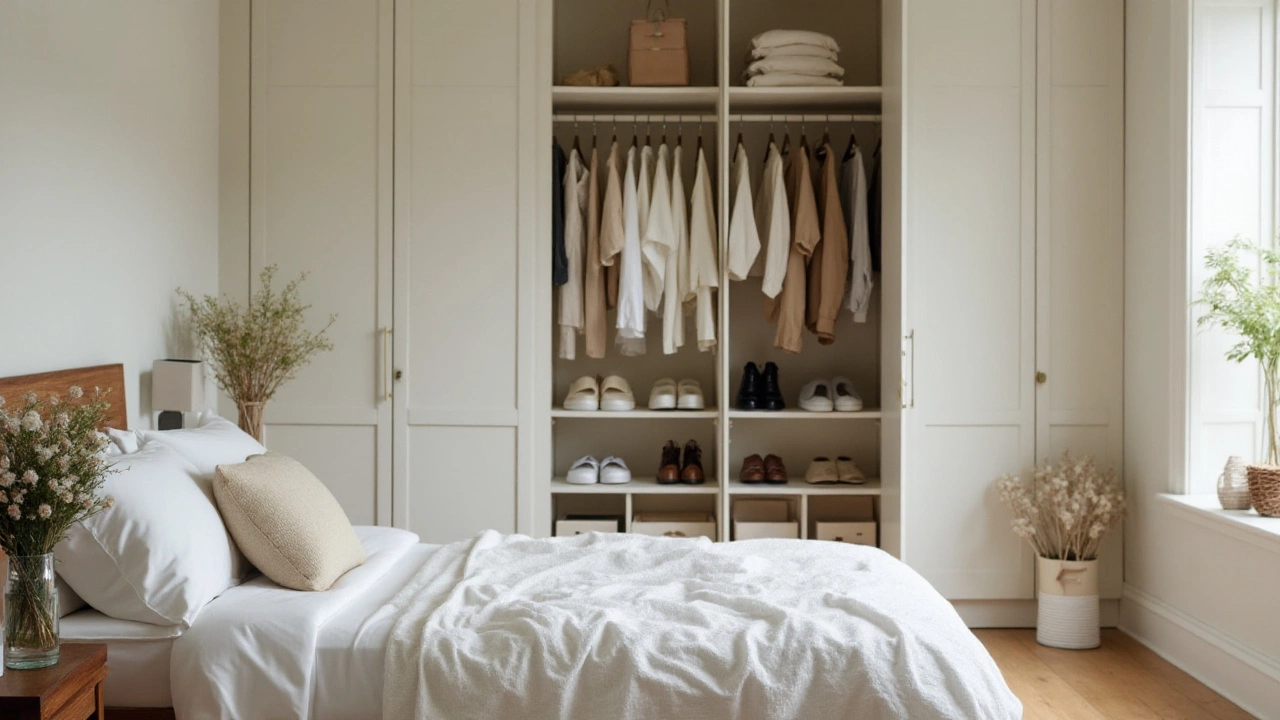
Effective Storage Solutions
Finding the right home storage solutions can revolutionize how you perceive your living space. Many people overlook the simplest of tricks that can make a world of difference: utilizing vertical space. Cabinets that reach up to the ceiling, tall bookcases, or even wall-mounted shelves can help you store more without sprawling items all over the floor. It's crucial to think about not only the amount of stuff but also how efficiently you can access everything. This is why modular furniture is gaining popularity. Pieces that combine functionality with elegance, like ottomans with hidden compartments or beds with pull-out drawers, offer discrete hiding spots for your belongings while complementing your home decor.
One remarkable aspect of effective storage is the use of transparent containers and bins. Having a clear view of the contents eliminates the need to rummage through, keeping disruptions to a minimum and maintaining order. In the kitchen, glass jars or labeled plastic containers can turn a chaotic pantry into a structured marvel. Similarly, wardrobes benefit greatly from vacuum storage bags, particularly for bulkier seasonal clothing. This modern approach grants significant space savings and can slip neatly into under-bed storage or the back of closets until needed. Simplicity doesn't mean minimalism; it's about finding smart ways to reclaim space and life.
Consider the routine involvement of organization within your storage strategy. The KonMari Method, popularized by Marie Kondo, instructs to keep only items that "spark joy." This might sound subjective, but it's a transformative mindset that firmly roots your choices in the practical. A quotation from Kondo herself, "The best way to find out what we really need is to get rid of what we don't," emphasizes that decluttering isn't just about ditching what you don't use, but valuing what you retain.
In terms of layout, organizing items by frequency of use can significantly cut down time wasted searching for essentials. Essential everyday items stored at eye level or easily reachable positions avoid unnecessary bending or stretching. For families, color-coded systems can streamline storage further, helping children learn to organize by making it fun and intuitive. Adding labels isn't just beneficial for aesthetics; when each box or basket is clearly named, it assigns responsibility and makes tidiness a shared goal.
To truly make the most of your declutter mission, incorporate a simple routine of periodic reassessment of your storage systems. Perhaps monthly or quarterly, take a moment to check what you have, ensuring it's still meeting your needs. Storing with purpose ensures you can have a stylish, stress-free environment, ready to thrive in. After all, creating spaces that work for you means reimagining the potential within our homes, leading to an organized, content lifestyle.
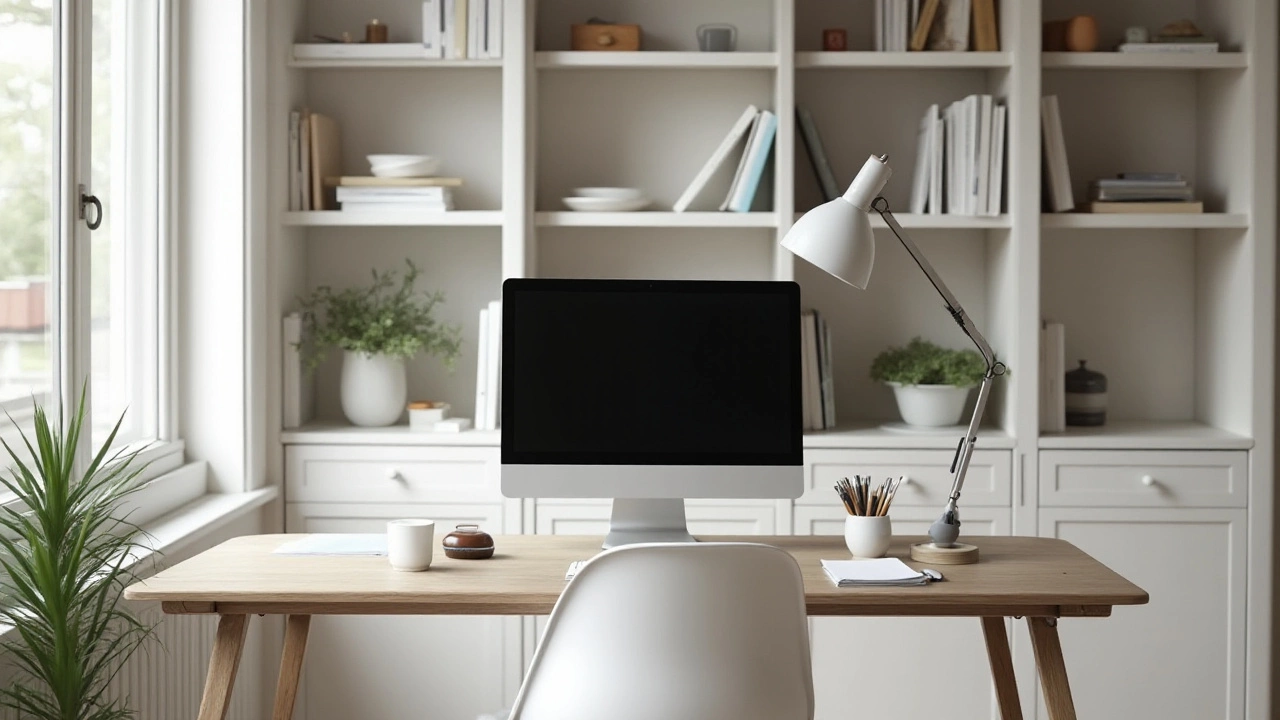
Maintaining a Clutter-Free Home
Keeping a tidy home is less about perfection and more about consistency. Once you've embarked on the journey of decluttering, the next step is maintaining your newfound sense of order. This process often begins with adopting habits that prevent the build-up of clutter before it even starts. A simple yet effective strategy is the one-in-one-out rule. For every new item that comes into your home, an old one must make its way out. This approach encourages mindfulness about new purchases and helps you actively manage your possessions. Regular donations to local charities or resell efforts of things you no longer need can be both refreshing and rewarding.
Another powerful method to sustain organization is to set up a daily, weekly, or monthly tidying routine. Just like brushing your teeth, consider daily tidying a must to keep the home healthy. Take 15 minutes each day to return items to their designated places. Weekly, you might focus on a particular room, giving it a more thorough clean and check-in to ensure everything is where it should be. Monthly tasks could include a deeper sweep through storage areas or going through seasonal items, ensuring rotation in and out of prominent spaces. Decluttering regularly rather than letting things pile up over time helps preserve your home’s appearance and functionality.
Investing in useful home storage solutions can also play a crucial role. Consider furniture with built-in storage, like ottomans or tables with drawers. Using vertical space efficiently such as adding shelves or hooks where feasible, helps to keep surfaces clear. A mix of open and closed storage, like baskets within bookshelves, can help categorize similar items while keeping them accessible. Not only does organized storage look appealing, but it also makes navigating daily life much simpler. The reduction of clutter leads to less stress and more time for activities you enjoy, like long walks with your dog, Rocky. Yet it’s essential to not rely solely on storage solutions to hide clutter—think of it as maximizing your living space’s functionality.
If you're looking for a minimalist perspective, Marie Kondo’s philosophy could be a guide here. The famed tidying expert often advocates for keeping only items that ‘spark joy’. Her systematic approach gives a personal touch to decluttering, focusing on emotional connections to items rather than sheer practicality.
"When you surround yourself with possessions that spark joy, you'll build a happier, more fulfilling life," Marie Kondo suggests. This thought can frame the mindset needed for keeping a home not only organized but also filled with positivity and warmth.
Of course, maintaining a clutter-free lifestyle is a journey, not a destination. You’ll find a rhythm that suits your lifestyle, and the key is to be adaptable and forgiving towards yourself. Life changes, and our homes should reflect those shifts. Celebrating small victories, like successfully finding something quickly because everything has its place, reinforces the positive impact of an organized home. Engage family members in this process; after all, living spaces are shared and more enjoyable when everyone participates. Teach children simple organizational tasks, making tidying a part of the household routine. Embracing a mindset that values organization is not just about aesthetics, it's a pathway to a more harmonious and balanced life at home.
